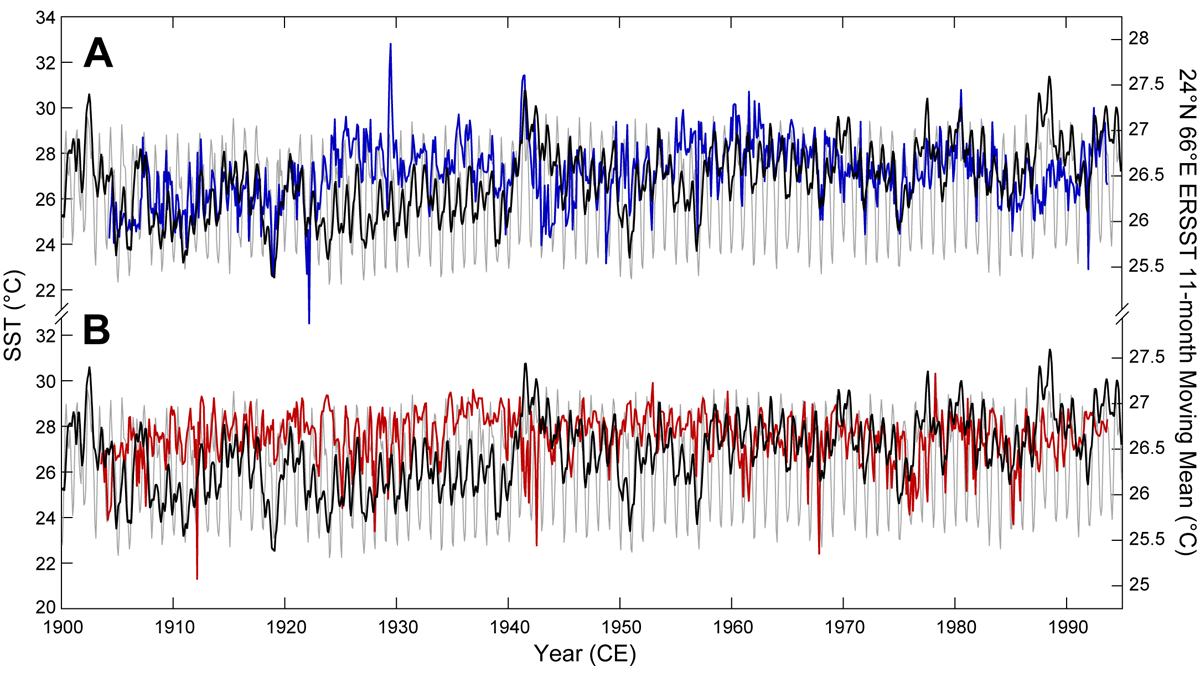Editors’ Highlights are summaries of recent papers by AGU’s journal editors.
Source: Paleoceanography and Paleoclimatology
Geochemical measurements afforded by marine sedimentary archives have been instrumental in shaping our understanding of climate change across timescales of hundreds to millions of years. However, typical oceanic sedimentation rates and the mixing of seafloor sediments by benthic organisms makes probing sub-century-scale changes in the marine realm extremely challenging.
Although there are a few deoxygenated regions of the ocean containing varved sediments which can facilitate archives of millimeter-scale laminations, most paleogeochemical techniques are too sediment-intensive for annual-scale reconstructions. Napier et al. [2022] take advantage of laminated sediments from the oxygen minimum zone of the northern Arabian Sea and use newly developed, non-destructive approaches to circumvent this problem.
Using novel mass spectrometric imaging techniques, they generate sub-annual-scale alkenone and crenarchaeol-caldarchaeol tetraether index measurements as proxies for inter-annual temperature changes. By combining these paleothermometry proxies with high-resolution elemental mapping across the sediments (a proxy for continental runoff), the authors are able to tie their reconstructions to observations of monsoon rainfall, runoff, and sea-surface temperature changes over the past century.
This approach outlines a pathway to investigate past inter-annual and multi-decadal-scale ocean-atmospheric phenomena from marine sediments in unprecedented temporal detail.
Citation: Napier, T. J., Wörmer, L., Wendt, J., Lückge, A., Rohlfs, N., & Hinrichs, K.-U. (2022). Sub-annual to interannual Arabian Sea upwelling, sea surface temperature, and Indian monsoon rainfall reconstructed using congruent micrometer-scale climate proxies. Paleoceanography and Paleoclimatology, 37, e2021PA004355. https://doi.org/10.1029/2021PA004355
—Kaustubh Thirumalai, Associate Editor, Paleoceanography and Paleoclimatology

